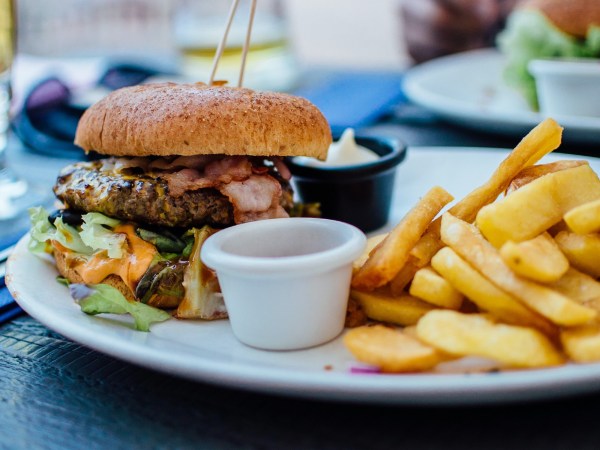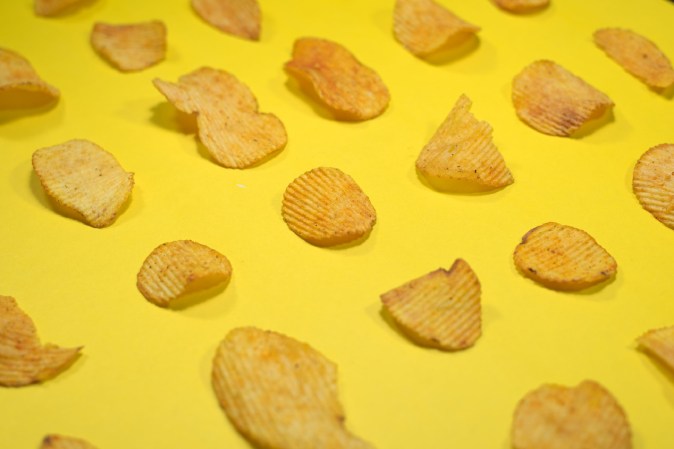

This article was originally featured on Knowable Magazine.
We’ve all heard of the five tastes our tongues can detect—sweet, sour, bitter, savory-umami and salty. But the real number is actually six, because we have two separate salt-taste systems. One of them detects the attractive, relatively low levels of salt that make potato chips taste delicious. The other one registers high levels of salt—enough to make overly salted food offensive and deter overconsumption.
Exactly how our taste buds sense the two kinds of saltiness is a mystery that’s taken some 40 years of scientific inquiry to unravel, and researchers haven’t solved all the details yet. In fact, the more they look at salt sensation, the weirder it gets.
Many other details of taste have been worked out over the past 25 years. For sweet, bitter and umami, it’s known that molecular receptors on certain taste bud cells recognize the food molecules and, when activated, kick off a series of events that ultimately sends signals to the brain.
Sour is slightly different: It is detected by taste bud cells that respond to acidity, researchers recently learned.
In the case of salt, scientists understand many details about the low-salt receptor, but a complete description of the high-salt receptor has lagged, as has an understanding of which taste bud cells host each detector.
“There are a lot of gaps still in our knowledge—especially salt taste. I would call it one of the biggest gaps,” says Maik Behrens, a taste researcher at the Leibniz Institute for Food Systems Biology in Freising, Germany. “There are always missing pieces in the puzzle.”
A fine balance
Our dual perception of saltiness helps us to walk a tightrope between the two faces of sodium, an element that’s crucial for the function of muscles and nerves but dangerous in high quantities. To tightly control salt levels, the body manages the amount of sodium it lets out in urine, and controls how much comes in through the mouth.
“It’s the Goldilocks principle,” says Stephen Roper, a neuroscientist at the University of Miami Miller School of Medicine in Florida. “You don’t want too much; you don’t want too little; you want just the right amount.”
If an animal takes in too much salt, the body tries to compensate, holding on to water so the blood won’t be overly salty. In many people, that extra fluid volume raises blood pressure. The excess fluid puts strain on the arteries; over time, it can damage them and create the conditions for heart disease or stroke.
But some salt is necessary for body systems, for example to transmit electrical signals that underlie thoughts and sensations. Consequences of too little salt include muscle cramps and nausea—that’s why athletes chug Gatorade to replace the salt lost in sweat—and, if enough time passes, shock or death.
Scientists in search of salt taste receptors already knew that our bodies have special proteins that act as channels to allow sodium to cross nerve membranes for the purpose of sending nerve impulses. But the cells in our mouth, they reasoned, must have some additional, special way to respond to sodium in food.
A key clue to the mechanism came in the 1980s, when scientists experimented with a drug that prevents sodium from entering kidney cells. This drug, when applied to rats’ tongues, impeded their ability to detect salty stimuli. Kidney cells, it turns out, use a molecule called ENaC (pronounced “ee-nack”) to suck extra sodium from blood and help maintain proper blood salt levels. The finding suggested that salt-sensing taste bud cells used ENaC too.
To prove it, scientists engineered mice to lack the ENaC channel in their taste buds. These mice lost their normal preference for mildly salty solutions, the scientists reported in 2010—confirming that ENaC was, indeed, the good-salt receptor.

So far, so good. But to truly understand how the good-salt taste worked, scientists would also need to know how the entry of sodium into taste buds is translated into a “Yum, salty!” sensation. “It’s what gets sent to the brain that’s important,” says Nick Ryba, a neuroscientist at the National Institute of Dental and Craniofacial Research in Bethesda, Maryland, who was involved in linking ENaC to salt taste.
And to understand that signal transmission, scientists needed to find where in the mouth the signal started.
The answer might seem obvious: The signal would start from the specific set of taste bud cells that contain ENaC and that are sensitive to tasty levels of sodium. But those cells didn’t prove simple to find. ENaC, it turns out, is made up of three different pieces, and although individual pieces are found in various places in the mouth scientists had a hard time finding cells containing all three.
In 2020, a team led by physiologist Akiyuki Taruno at the Kyoto Prefectural University of Medicine in Japan reported that they had identified the sodium-taste cells at last. The researchers started with the assumption that sodium-sensing cells would spark an electrical signal when salt was present, but not if the EnaC blocker was there too. They found just such a population of cells inside taste buds isolated from the middle of mouse tongues, and these turned out to make all three components of the ENaC sodium channel.
Scientists can thus now describe where and how animals perceive desirable levels of salt. When there are enough sodium ions outside those key taste bud cells in the mid-tongue area, the ions can enter these cells using the three-part ENaC gateway. This rebalances the sodium concentrations inside and outside the cells. But it also redistributes the levels of positive and negative charges across the cell’s membrane. This change activates an electrical signal inside the cell. The taste bud cell then sends the “Mmmm, salty!” message onward to the brain.

Too salty!
But this system doesn’t explain the “Blech, too much salt!” signal that people also can get, usually when we taste something that’s more than twice as salty as our blood. Here, the story is less clear.
The other component of salt—chloride—might be key, some studies suggest. Recall that salt’s chemical structure is sodium chloride, though when dissolved in water it separates into positively charged sodium ions and negatively charged chloride ions. Sodium chloride creates the saltiest high-salt sensation, while sodium paired with larger, multi-atom partners tastes less salty. This suggests that sodium’s partner might be an important contributor to the high-salt sensation, with some partners tasting saltier than others. But as to exactly how chloride might cause high-salt taste, “Nobody has a clue,” says Roper.
One hint came from work by Ryba and colleagues with an ingredient of mustard oil: In 2013, they reported that this component reduced the high-salt signal in mouse tongues. Weirdly, the same mustard-oil compound also nearly eliminated the tongue’s response to bitter taste, as if the high-salt-sensing system was piggybacking onto the bitter-tasting system.
And it got odder still: Sour-taste cells seemed to respond to high salt levels, too. Mice lacking one or the other of the bitter- or sour-taste systems were less put off by extremely salty water, while those lacking both happily slurped down the salty stuff.
This article originally appeared in Knowable Magazine, an independent journalistic endeavor from Annual Reviews. Sign up for the newsletter.







